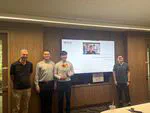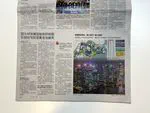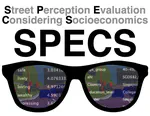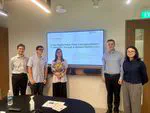Urban Analytics Lab
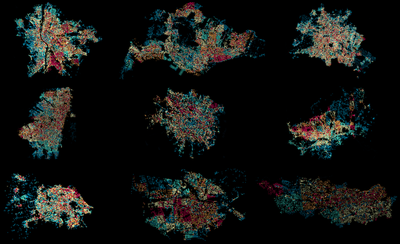
About us
We are introducing innovative methods, datasets, and software to derive new insights in cities and advance data-driven urban planning, digital twins, and geospatial technologies in establishing and managing the smart cities of tomorrow. Converging multidisciplinary approaches inspired by recent advancements in computer science, geomatics and urban data science, and influenced by crowdsourcing and open science, we conceive cutting-edge techniques for urban sensing and analytics at the city-scale. Watch the video above or read more here.
Established and directed by Filip Biljecki, we are proudly based at the Department of Architecture at the College of Design and Engineering of the National University of Singapore, a leading global university centered in the heart of Southeast Asia. We are also affiliated with the Department of Real Estate at the NUS Business School.
News
Updates from our group
Recent publications
Full list of publications is here.
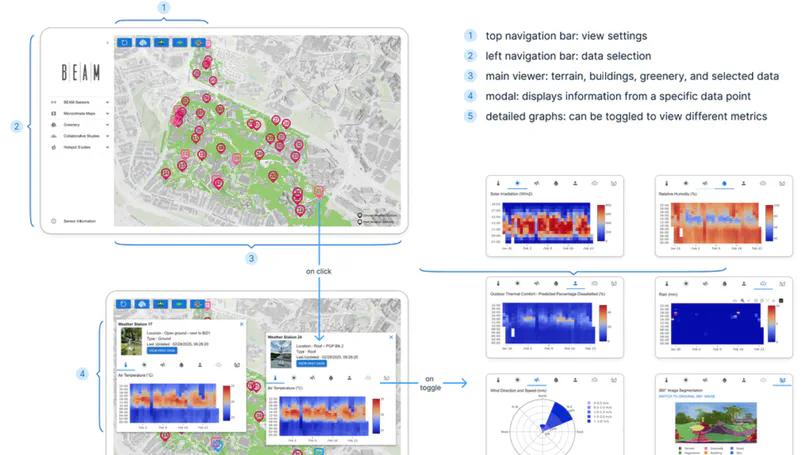
Urban Digital Twins (UDTs) integrate multilayered spatial data to support urban planning and climate adaptation efforts. Although UDTs have advanced significantly in data integration and predictive modeling, their usability remains underexplored. This study evaluates the Baselining, Evaluating, Action, and Monitoring (BEAM) platform, a web-based UDT developed by the National University of Singapore (NUS) for thermal comfort analysis. Through usability testing with ten urban planners and researchers, five from Singapore and five from the United States, this research assesses navigation, data interpretation, and integration into real-world workflows. Participants completed guided tasks as well as usability surveys, revealing key challenges in data navigation, interface clarity, and analytical flexibility. User Experience Questionnaire (UEQ) results showed high scores for attractiveness (1.67) and stimulation (1.70), but lower ratings for perspicuity (0.75). The findings highlight the need to improve affordances, contextual information, and the ability to interpret complex data sets. Minor regional differences in usability preferences also emerged, particularly in seasonal analysis and measurement units. By bridging technical advances with practical usability insights, this study contributes to the development of more accessible and effective UDT platforms. The findings inform future design improvements to enhance the adoption of UDTs, ensuring that these tools better support urban planners, policy makers, and researchers in climate adaptation and decision-making processes.
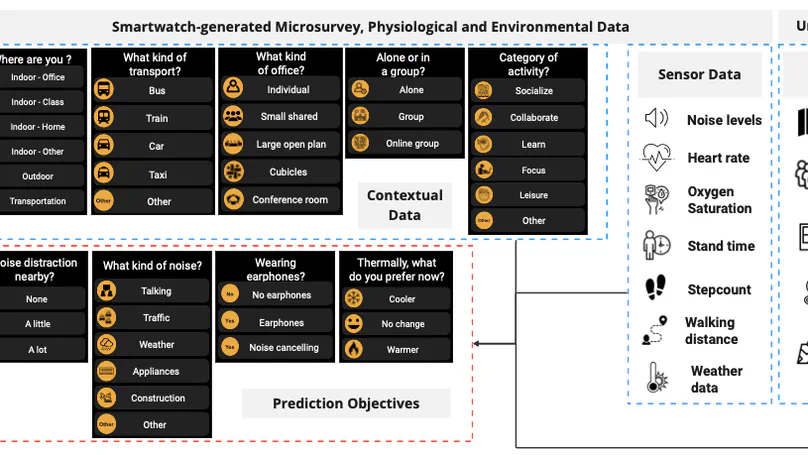
The prediction of thermal and noise-based preferences in the urban context is valuable in characterizing interventions to mitigate the challenges of health, productivity, and satisfaction of urban dwellers. The growth of crowd-sourced data and data-driven techniques provides an opportunity to increase the understanding of which machine learning models are most accurate and applicable for this context. This paper outlines the results of a machine learning competition aiming to enhance the accuracy of predicting human comfort in the city context. The competition asks contestants to use contextual data to predict noise distraction and thermal preference in various indoor and outdoor spaces. This competition included the city-scale collection of 9,808 smartwatch-driven micro-survey responses that were collected alongside 2,659,764 physiological and environmental measurements from 98 people using an open-source watch-based platform combined with geolocation-driven urban digital twin metrics. This paper explains the two best solutions to this competition and provides a discussion of the factors that may have contributed to their accuracy of more than 0.7 in multiclass tasks. These solutions notably included the use of LightGBM, XGBoost, CatBoost, and simple Neural Networks while avoiding overly complex solutions such as deep learning or recurrent architectures, which offer limited advantages for structured data classifications.
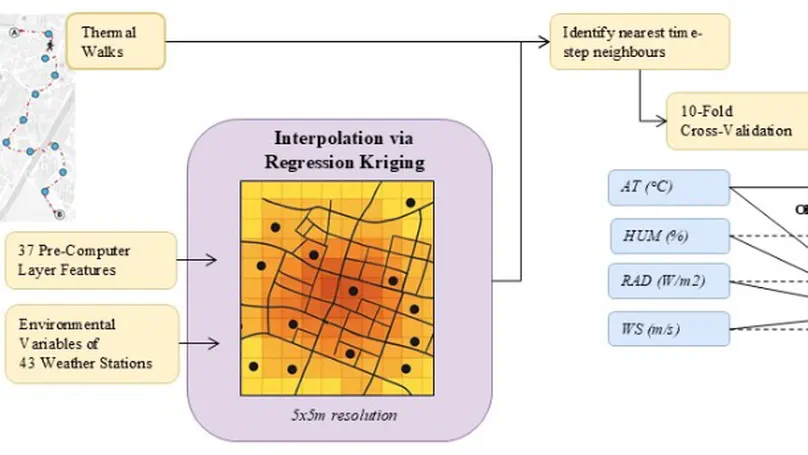
High-resolution microclimate maps are critical for advancing urban climate resilience strategies by providing detailed spatial insights into environmental variables. This study evaluates the performance of using a random forest regressor with single and multiple features to fit interpolated environmental data, including solar radiation, temperature, humidity, and wind speed. Using regression kriging on observations from 42 weather stations distributed on the campus of the National University of Singapore (NUS), spatial environmental variables were mapped at a 5×5 meter resolution. The interpolation process uses various geospatial layers to refine the results and the fine-scale spatial resolution. As a result, this model captures the localized variability of environmental variables. This work contributes to urban climate modeling by advancing the methodological frameworks for microclimate mapping and addressing the growing need for reliable high-resolution environmental data to inform thermal comfort assessments and resilience strategies.

Urban areas face significant challenges from extreme heat and urban heat islands (UHIs), which often interact and intensify each other at multi-spatial scales. However, most existing studies examine extreme heat and its interaction with UHIs at the city scale, overlooking the spatial heterogeneity of temperature responses within local areas. Extreme heat does not manifest uniformly across the entire city, and the UHI is a typically localized phenomenon influenced by changes in local climate and urban factors. To address this gap, this study defines local extreme heat (LEH) at the local scale based on 1 km and examines surface urban heat island (SUHI) response to local extreme heat (LEH) in Singapore, a tropical city experiencing more frequent extreme heat events. Using multi-year temperature datasets, we calculated the difference in SUHI intensity (SUHII) between LEH and non-LEH conditions, referred to as SUHII. Our findings revealed that SUHII responses to LEH differed by daytime and nighttime and local areas. Daytime SUHII peaked at 3.2 °C in the northeast, while nighttime SUHII reached 0.6 °C in other regions. To identify the dominant drivers of SUHII responses to LEH, we employed the spatial Random Forest (spatialRF) model. Our results showed that the spatialRF model achieved R-squared values exceeding 63% for predicting daytime SUHII and 45% for nighttime SUHII. LEH, land use, and vegetation dominantly contributed to daytime SUHII, while socioeconomic factors mostly influenced nighttime SUHII. Furthermore, we applied SHAP to interpret the spatialRF model. Hotspots of both daytime and nighttime SUHII were driven by socio-economic factors. Finally, nonlinear associations showed that the cooling effect of vegetation reached saturation, as the SHAP values remained positive, while water bodies, as indicated by a U-shaped SHAP pattern followed by a decline, were more effective in mitigating SUHII increases under LEH conditions.
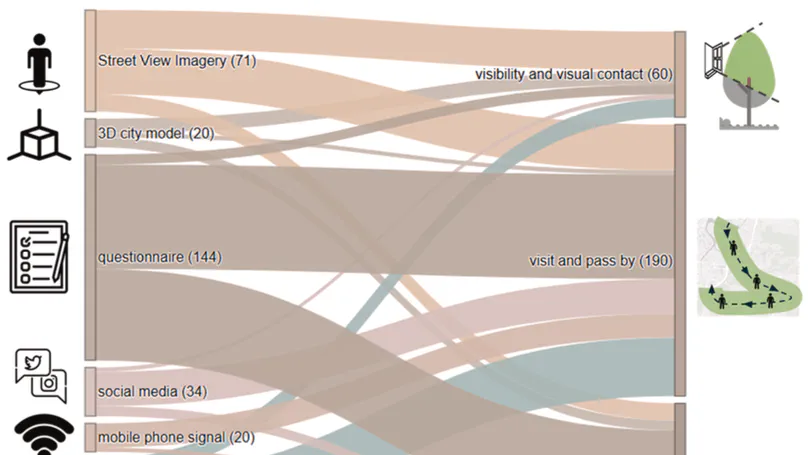
Greenery plays a vital role in urban environments, providing numerous benefits through diverse pathways. Various metrics and methodologies have been proposed to assess multiple dimensions of greenery exposure. For a comprehensive and precise assessment of greenery exposure for different research purposes, it is crucial to identify the most suitable methods and data sources. However, existing reviews primarily address the health outcomes of urban greenery, rather than the methods of assessing greenery exposure. To address this gap, we conducted a review of 312 research articles, focusing on methodologies and technologies for measuring greenery exposure in urban settings. This review categorizes exposure measurement techniques into three categories: proximity-based, mobility-based, and visibility-based, evaluating their strengths, limitations, and synergies. Proximity-based methods generally assess overall greenery level in residential areas or other locations, but they fall short in capturing the actual interactions between humans and greenery. Mobility-based methods track real-time human location and assess greenery exposure based on travel trajectories, but they neglect the specific nature of human-greenery interactions. In contrast, emerging visibility-based methods offer opportunities to measure potential visual interactions between individuals and greenery. We found emerging metrics tend to integrate 3D data, qualitative aspects, and diverse data sources. We advocate for an integrated approach that encompasses both human mobility and potential interactions with greenery across various areas. We also argue that data granularity is balanced against cost, scalability, and ethical constraints. Our comprehensive review offers a framework and categorization to guide studies in designing exposure measurements aligned with their research objectives.
Contact
- [email protected]
- SDE4, NUS College of Design and Engineering, 8 Architecture Dr, Singapore, Singapore 117564
- X
